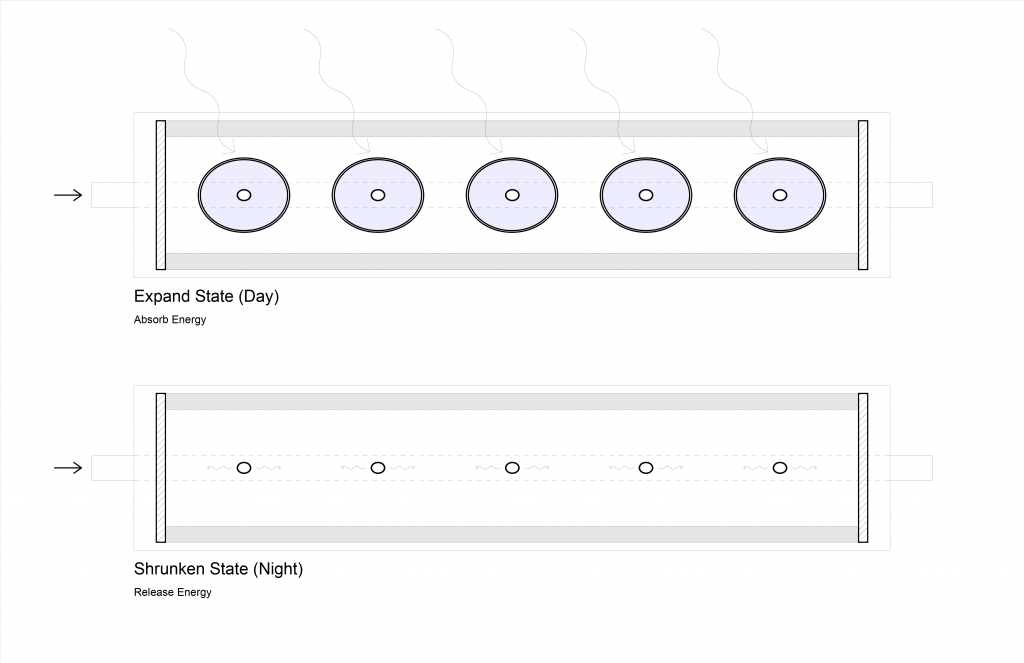Soft-Actuation Based Dynamic Facade for Building Performance
Our concept is to create a soft-actuation-driven dynamic architectural facade element that enhances building performance. The American Institute of Architects (AIA) has established a goal for 2030: all proposed and built projects must be net-zero. Whether or not that is achievable is not within the scope of this research.
Our system uses a soft, flexible, and robust material as a mechanical pump, creating a negative pressure in a closed-loop heating system. High-performing architectural facades inspired this proposal in locations farther from the equator, which sees relatively higher temperatures during daylight hours and vice versa. A few architectural terms must be addressed to understand this project proposal fully.
- Low-E Coating
- A type of metallic, invisible to human eye coating that is applied onto glazing assembly to reduce infrared light transmission rate significantly. It is often used to allow natural light to enter and block heat.
- Glare
- Direct light creates a highly uncomfortable indoor environment.
- Internal Heat Gain
- Somewhat related to the purpose of Low-E Coating. Internal Heat Gain refers to the increasing temperature inside a building, usually caused by solar radiation penetrating the glazing assembly. Still, it can also penetrate via opaque surfaces much slower.
- Lux
- A light measurement unit.

The plan above depicts the two states of our system. Upon exposure to daylight or heat, the soft pump will activate and enlarge, pulling water resources from an off-site location. Then, the water inside the pump structure would be maintained inside and gradually heated up due to solar exposure. To accelerate this process, Low-E coatings are applied to the interior of the assembly chamber, effectively trapping heat. This process will also reduce the building’s internal heat gain. At the same time, the enlarged pump structure will serve as a shading device, reducing glare and creating indirect light.
Once the exterior temperature or lux drops to a certain threshold, the heated water will be released inside a closed-loop heating system via tubes connected to the pumps. The heated water can then be used as hot water for lavatories or as floor heating using a pex-tubing system.

We are currently investigating the affordance of the soft pumping mechanism, especially the volume differences between the two states. Ideally, the greater the difference, the more efficient and cost-effective this system will be. However, other issues regarding the system invites future studies, such as maintenance, material, and thermal-exchange performance.